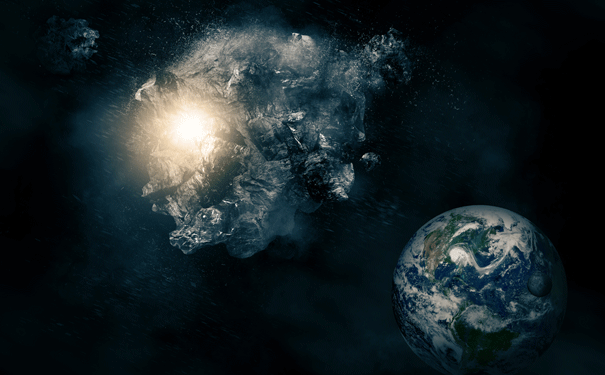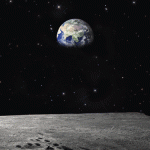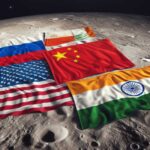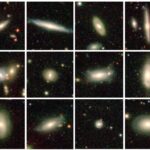
The Moon is believed to have formed after a collision. Image: Shutterstock
The great impact hypothesis may not be right.
Geochemists from the University of Chicago, US, and the University of Bern, Switzerland, have challenged the prevailing view of how the Moon formed. An analysis of the isotopes found in lunar minerals, published in Nature Geoscience, suggests that the Moon may not be the result of the giant impact hypothesis.
Many scientists believe that Earth collided with a Mars-sized planet, called Theia, about 4.5 billion years ago. This would have produced a disc of magma orbiting our planet that eventually coalesced to form the Moon.
Computer models have indicated that for the collision to remain consistent with the laws of physics, at least 40 per cent of the magma would have to have come from Theia, which would presumably have had a different isotopic composition to Earth. One way of testing the hypothesis is to examine the isotopes in lunar rocks, as the proportions of titanium isotopes found on Earth differ from those from Mars or a meteorite.
The geochemists looked at titanium isotopes 50Ti to 47Ti in 24 separate samples of lunar rock and soil. They found that the proportions of titanium isotopes were effectively the same as those on Earth and different from elsewhere in the solar system.
Earlier research has also confirmed that the Earth and the Moon had virtually the same oxygen isotope compositions. It has been suggested that the Earth may have exchanged oxygen gas with the magma disc shortly after the collision, which would explain the oxygen composition.
However, research leader Junjun Zhang told Science Now it’s unlikely Earth could have exchanged titanium gas with the magma disk because titanium has a very high boiling point. “The oxygen isotopic composition would be very easily homogenised because oxygen is much more volatile, but we would expect homogenising titanium to be very difficult,” he said.
The Moon may instead be the result of a glancing blow from a passing body that left Earth spinning so rapidly that it threw some of itself off into space like a shot put. This would have formed the magma disc and could explain why the moon seems to be made entirely of Earth materials.
However, there are problems with this model, such as the difficulty of explaining where all the extra angular momentum went after the moon formed. So the researchers aren’t claiming to have refuted the giant impact hypothesis.







Philip Bruce Heywood
April 22, 2012
Anyone interested in ending the lunar suspense, go to http://www.creationtheory.com or merely search on GOOGLE under Common Donor Capture Moon Origin.
Moon origin has been solved for yonks. Titanium isotopes are just one more foregone conclusion of the obvious.